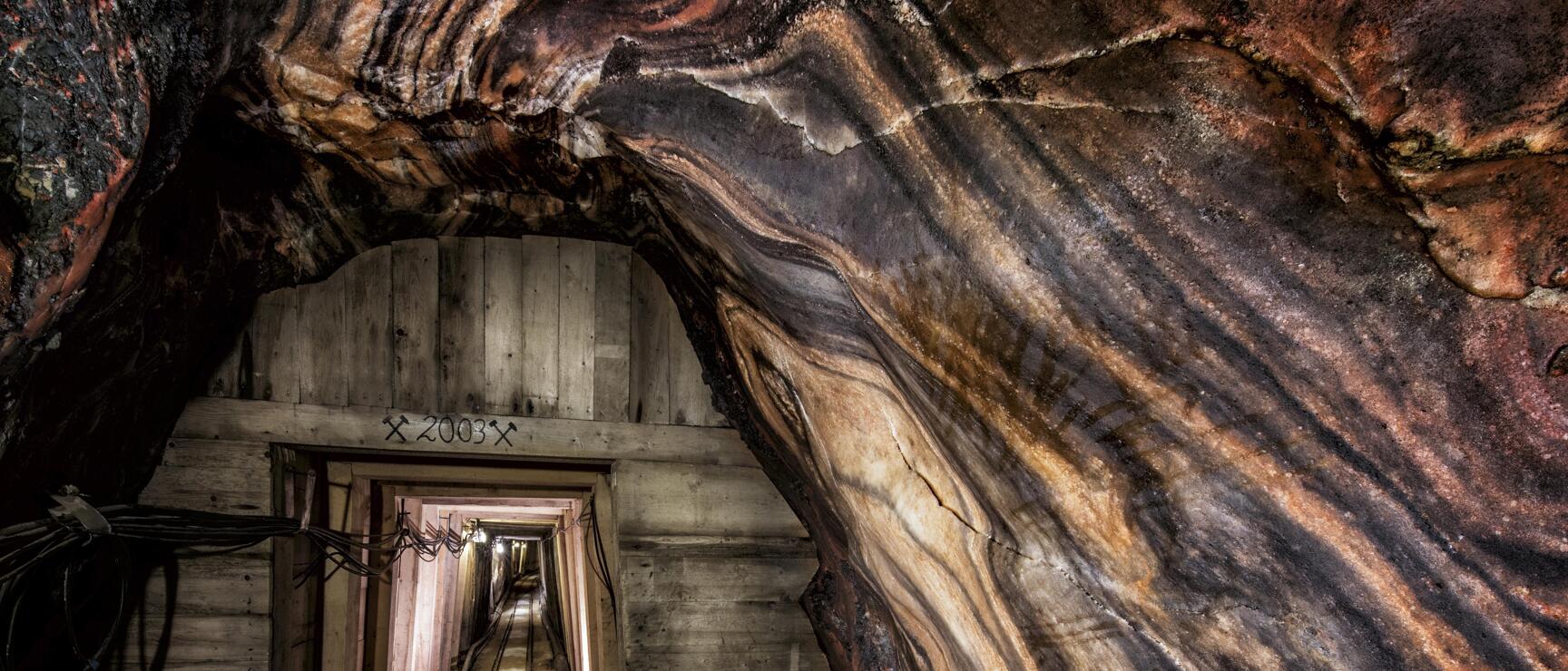
Salt Mines in Austria
White gold underground
The Salt Mines in Austria: Salt from Within the Mountain
Step by step, you venture deeper into the mountain. It’s narrow here, and the earthy, cool air creates a damp film on your skin. The walls and floor of the mine feel rough and crystalline, with tiny grains of salt almost palpable beneath your fingers. The long journey deep into the tunnels seems endless until suddenly a large cavern opens up. Here, the white gold is embedded within the mountain.
But who would have guessed: in the lamp light, the walls shimmer in shades of orange and red! And that’s not the only surprise: who would expect to find an underground prayer room, an exhibition on Nazi-looted art, miner slides, or even a floating theatre stage with a light show underground? Visiting a salt mine is truly an experience, making you feel as though you’ve entered a unique and mystical world.
The three salt mines in Austria
A cinematic story
Art treasures stored in the salt mine
Anyone who saw Monument Men with George Clooney, Bill Murray and Matt Damon knows the story. During the Second World War, the Nazis used the salt mines of Altaussee as gigantic storage space for stolen art. Altogether more than 6.500 valuable paintings were stored below ground, in addition to statues, unique pieces such as the Ghent Altarpiece, historic weapons and entire libraries.
When the Americans approached during the spring of 1945, Hitler wanted the mines destroyed, rather than leaving the art to be found by the Allies. It was brave miners from Altaussee who prevented this. We won’t give away how - but you can find out at the exciting exhibition which is accessible for visitors during the guided tour through the Altausseer Bergwelten. It even includes the Monument Men and the world-famous Ghent Altarpiece – as a hologram suspended in the room.